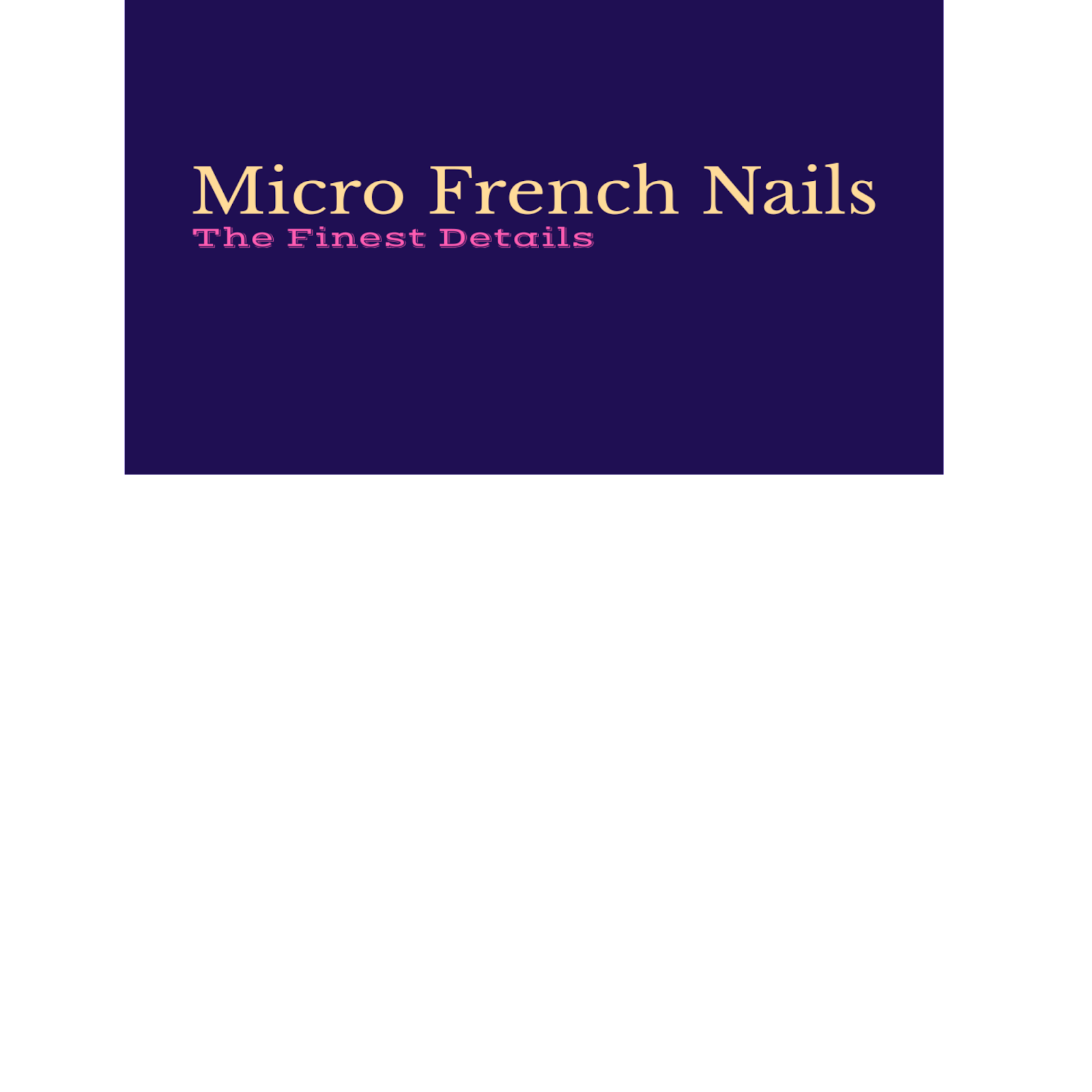French Nails: The Perfect Way to Look Effortlessly Chic
French Nails: The Perfect Way to Look Effortlessly Chic
 |
| Micro French Nails |
When it comes to manicures, few styles can rival the timeless beauty of French nails.
This classic and sophisticated look has been adorning the hands of fashion-conscious individuals for decades.
French nails are renowned for their clean and natural appearance, characterized by a pale pink or nude base and a pristine white tip.
In this blog post, we will explore the allure of French nails, dive into their history, discuss different variations, and provide you with tips for achieving the perfect French manicure.
Get ready to embrace the elegance and effortless chicness of French nails!
1. The History of French Nails:
The origin of French nails can be traced back to the 1930s, when Max Factor, a prominent figure in the beauty industry, introduced the style.
Initially known as the "natural nail look," French nails gained popularity for their ability to enhance the natural beauty of one's hands.
Over the years, this iconic manicure style has evolved and become a staple in the fashion world, gracing the runways and red carpets.
2. The Timeless Appeal of French Nails:
2.1 Versatility:
One of the remarkable aspects of French nails is their versatility.
This classic style complements any outfit, from casual to formal, making it suitable for everyday wear, special occasions, and professional settings.
French nails exude an understated elegance that never goes out of fashion.
2.2 Length Illusion:
French nails create an optical illusion of longer and more slender nails.
The white tip visually extends the nail bed, giving the appearance of graceful and elongated fingers.
This makes French nails a favorite choice for those desiring a more refined and elegant hand appearance.
3. Achieving the Perfect French Nails:
Ready to achieve flawless French nails? Follow these steps for a salon-worthy manicure:
3.1 Nail Preparation:
Begin by removing any existing nail polish and shaping your nails to your desired length and shape.
Gently push back your cuticles and buff the surface of your nails to create a smooth canvas.
3.2 Base Coat:
Apply a thin layer of base coat to protect your nails and create a smooth surface for the polish to adhere to.
This step helps prevent staining and enhances the longevity of your French manicure.
3.3 Base Color:
Choose a pale pink or nude shade as your base color.
Apply one to two coats, ensuring even coverage. Allow each coat to dry before applying the next.
3.4 White Tip:
Using a white nail polish or a French manicure strip guide, carefully paint the tips of your nails.
Start from one side and gently curve the brush or guide across the tip, creating a clean and crisp line.
Alternatively, you can use nail tip guides or adhesive strips to achieve a precise white tip.
3.5 Seal with Top Coat:
Once your French nails are dry, apply a high-quality top coat to seal and protect your manicure.
This step adds shine, enhances durability, and extends the life of your French nails.
4. French Nails Variations:
While the classic French nails are undoubtedly timeless, there are variations you can explore to add a modern twist to this traditional style:
4.1 Reverse French Nails:
In this variation, the colors are reversed, with the white tip placed at the base of the nail instead of the tip.
This style offers a unique and eye-catching take on the French manicure, allowing you to experiment with different color combinations and gradients.
4.1 French Fade Nails:
The French fade, also known as the baby boomer or ombré French nails, is a popular variation that adds a gradient effect to the traditional French manicure.
Instead of a distinct white tip, the white color gradually fades into the base color, creating a seamless transition.
This softer and more blended look offers a modern twist to the classic French nails and allows for endless creativity in color choices.
4.3 Accent Nails:
To add a touch of individuality to your French nails, consider incorporating accent nails.
Choose one or two nails, typically the ring finger or the thumbnail, and apply a different design or embellishment.
You can experiment with glitter, nail art, or even delicate patterns to create a unique and personalized statement.
5. Maintaining Your French Nails:
To ensure your French nails stay flawless and beautiful for longer, follow these maintenance tips:
5.1 Avoid Harsh Chemicals:
Protect your manicure by wearing gloves when cleaning, doing dishes, or using harsh chemicals.
This helps prevent chipping or dulling of the polish.
5.2 Regular Touch-ups:
French nails may require periodic touch-ups to maintain their pristine appearance.
If you notice any chips or wear on the white tips, use a small brush and white polish to carefully touch up the areas.
5.3 Moisturize Your Hands:
Keep your hands and cuticles hydrated by regularly applying a nourishing hand cream or cuticle oil.
This helps prevent dryness and promotes healthy nail growth.
Conclusion:
French nails have stood the test of time for a reason.
Their timeless elegance and versatility make them a go-to choice for those seeking a sophisticated and effortless manicure style.
Whether you opt for the classic French nails, explore variations like the French fade or accent nails, or experiment with different colors, French nails will always exude chicness and grace.
By following the steps to achieve the perfect French nails and incorporating your own personal touch, you can enjoy a manicure that enhances the natural beauty of your hands and complements any occasion.
So, embrace the allure of French nails and indulge in the everlasting charm of this iconic manicure style!






Post a Comment